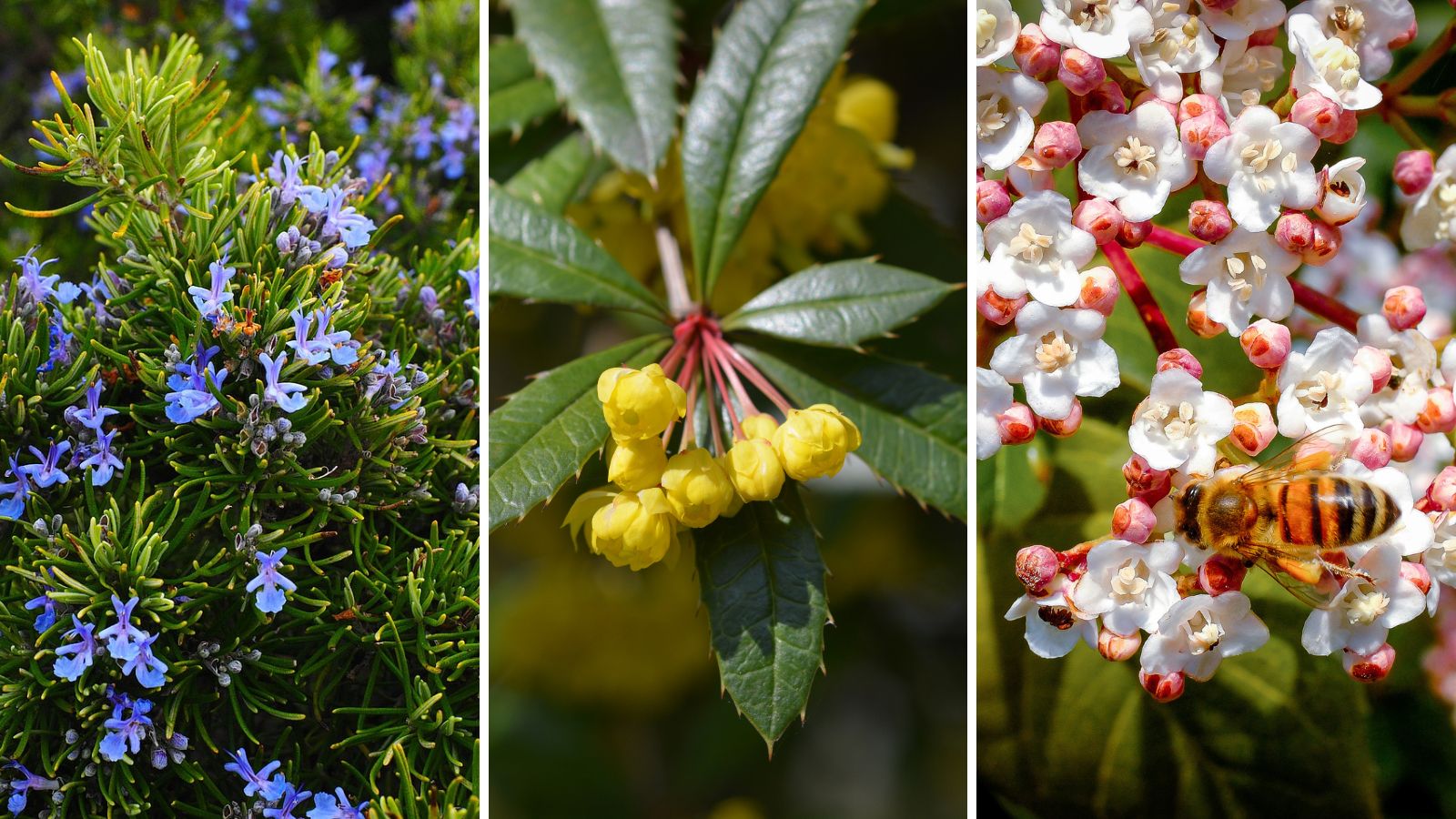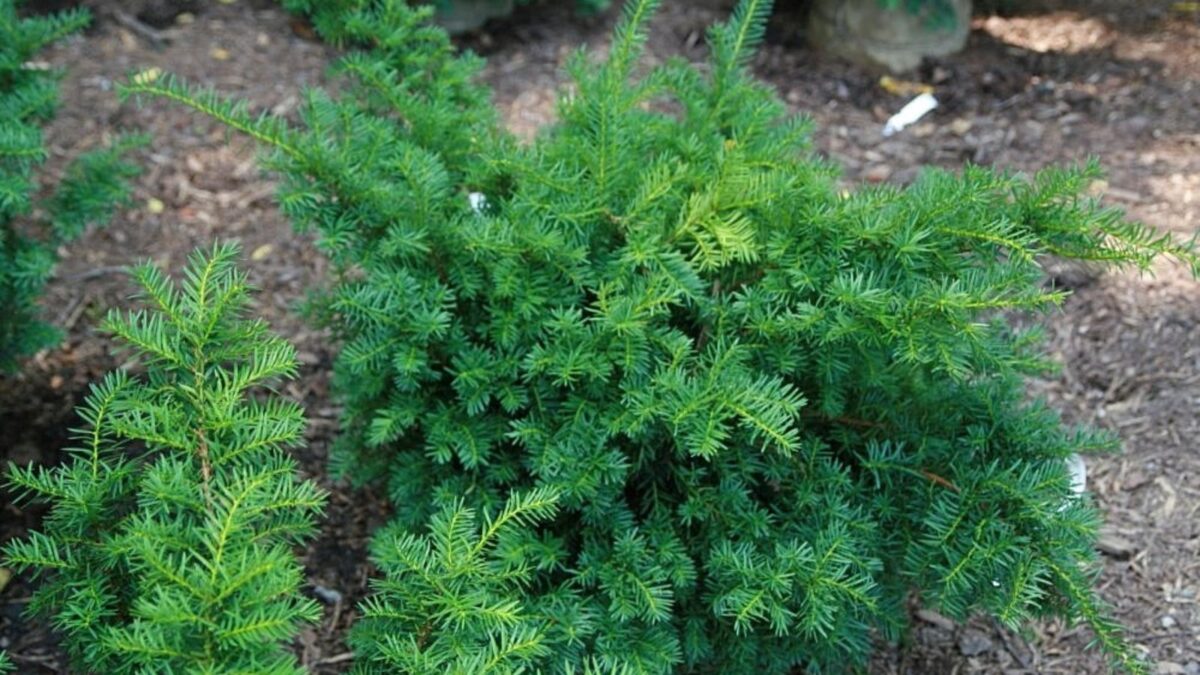Many evergreen plants are perfect for adding year-round privacy, color, and texture to any yard. Find the best evergreen hedge plants to upgrade your property right here.
There are several reasons you might want to build a hedge, but most people are looking for privacy. Hedges are natural barriers that look more inviting and sophisticated than a simple fence. In addition to privacy, hedges can help break harsh winds and even block noise pollution, quietly muffling your yard from a noisy neighborhood. Regardless of your reason for planting, evergreen hedges are an ideal choice.

Unlike deciduous trees that lose their leaves in the fall, evergreen shrubs and trees will keep their leaves. These evergreen plants will maintain a consistent look all year long, ensuring no loss of privacy. They’re also generally low maintenance and can thrive for decades with regular pruning, watering, and fertilizing.
How to choose the best hedging plants

There are a few things to consider when choosing your next hedge and it’s worth the time and effort to think these things through since evergreen hedges live for so long.
- Soil & sun conditions: Many evergreen edges can grow in a wide range of conditions. Native plants from your region will tolerate your specific growing conditions the best.
- Hardiness zones: If you live in a very hot or cold region, invest in hedges that can withstand the seasons.
- Water needs: For best results, install irrigation for your hedge planting unless you choose drought-resistant plants like juniper or barberry.
- Mature height: Since the purpose of hedges is to hide things, you’ll want a plant that grows tall enough to do that. Hedges come in all different heights, including short shrubs to tall trees.
- Growing speed & maintenance: Most hedges must be trimmed annually, but some fast-growing varieties may quickly outgrow your space and require more attention.
- Appearance: This is arguably the most important characteristic since hedges are usually planted as visual privacy screens. Consider whether the hedge flowers or produces berries and the shape and color of its leaves.
- Pests & diseases: To protect your investment and keep your hedges alive for years, take some time to look into common pests and diseases. Choose disease-resistant plants whenever possible.
15 Best Evergreen Hedge Plants
Although many evergreen plants are available, the following 15 are the best for growing as hedges to add privacy to any yard.
1. Boxwood (Buxus)

Box hedges are the most iconic hedges as they have bright green foliage and can be sculpted into tidy square-shaped hedges without looking patchy or spotty.
They can tolerate full sun to part shade and grow well in zones 6-8.
2. Cherry laurel (Prunus laurocerasus)

Also known as Prunus laurocerasus, laurels are broad-leaved evergreens known for their glossy leaves. Unlike other evergreens with spiky pines, laurels resemble deciduous shrubs, except they don’t drop their leaves in the fall.
They are also one of the best fast-growing hedges and fare well in zones 6-8 with some shade.
3. Western redcedar (Thuja plicata)
This Western native is part of the Cypress family and is known for its deep green foliage and natural conical shape. Also known as Thuja plicata, Western Red Cedar makes a tall, dense hedge perfect for growing along a driveway or for closing off a backyard.
It grows well in zones 5-9 and likes full sun or partial shade.
4. Dense spreading yew (Taxus x media ‘Densiformis’)
This slow-growing shrub provides year-round interest with its beautiful green spines and bright red berries. This plant maxes out at about 3-4 feet tall and can spread as much as 6 feet wide.
It is relatively disease resistant and thrives in zones 4-7. Yew plants are toxic to all animals, so keep that in mind.
5. Holly (Ilex)

These small trees are known for their bright red berries, leathery leaves, and sharp thorns that deter pests and unwanted visitors. Holly is remarkably tolerant of soil and sun conditions, but they prefer well-draining, slightly acidic soil in zones 5-9.
Japanese Holly grows densely and is an excellent option for hedges. Be sure to plant one male and one female if you’d like your holly plants to produce berries.
6. Arborvitae (Thuja)

These fast-growing hedges are among the best privacy hedges due to their dense growing pattern. Plus, they have beautiful green foliage and a pleasing conical shape. They are also easy to grow and require little maintenance.
Some varieties, like Thuja occidentalis or Eastern Arborvitae, can grow in zones 2-8. Popular types, like the Green Giant Arborvitae, grow best in zones 5-8.
7. Wintergreen barberry (Berberis julianae)

Although not all barberry plants are evergreen, the Wintergreen Barberry keeps its beautiful green leaves all year. They also produce lovely yellow flowers during early spring. This barberry is remarkably easy to grow as it can tolerate various soil and sun conditions and is disease-free.
This large shrub grows up to 10 feet tall and wide, so you only need a few to enclose your space. Barberries grow long spikes, so this plant may not be ideal for families with small children.
8. Laurustinus (Viburnum tinus)

For something a little more colorful and feminine, try Laurustinus or Viburnum tinus. It offers color and texture all year round with its masses of pink buds that form in the winter, white flowers in spring, and dark blue berries in early summer. This abundance of flowers and berries will invite pollinators and birds, making this plant quite the spectacle.
Viburnums are also incredibly hardy and can tolerate zones 2-9.
9. Leyland cypress (Cupressus × leylandii)
This fast-growing conical hedge can reach 60-70 feet tall and 15-25 feet across. The Leyland Cypress is perfect for adding a significant barrier to fight soil erosion or minimize wind.
Even better, these trees thrive in zones 6-10 and can tolerate variable soil and sun conditions, although they prefer well-drained soil.
10. Rosemary (Salvia rosmarinus)

Unlike many hedges, this evergreen hedge is edible, so it is a multipurpose plant. Plus, rosemary has a delicious scent and fragrant flowers, making it especially lovely to be around.
Rosemary grown as a hedge will reach 4-6 feet tall in zones 7-10 and invite many pollinators. Look for upright varieties like Tuscan Blue, Blue Spires, or Miss Jessopp’s Upright.
Similar to rosemary, lavender makes a beautiful hedge that is almost carefree.
11. Juniper (Juniperus)

This blue-green evergreen shrub thrives in zones 3-9, making it suitable for almost all gardeners. Juniper’s unique color, waxy blue berries, and aromatic scent set it apart from other evergreen hedges. Plus, it can tolerate extreme heat and survive with almost no moisture.
Juniper is perfect for people who need a drought-resistant hedge. Choose upright varieties and prune them in early spring.
12. Gardenia (Gardenia jasminoides)

Although gardenia is only hardy in zones 7-11, its large, fragrant white blooms and glossy foliage make it a winning choice for a short hedge. Upright gardenia plants typically reach 3-5 feet tall and wide, making them perfect for fencing off a front yard or smaller area.
Since gardenia can be finicky, it’s important to plant it in well-draining soil and water regularly.
13. Hedge germander (Teucrium x lucidrys)
This aromatic mint relative only reaches about 18 inches tall, so it’s an excellent option for a short hedge, like a garden border, or along a walkway. Unlike the tidy, trimmed hedges above, its tall, slightly wild appearance softens any edge.
Germander is hardy in zones 5-9 and produces lovely pink or purple flowers in the summer.
14. Chinese hawthorn (Photinia)

With its bright red and green leaves, photinia is a stunning hedge that adds visual interest to any garden. This Asian plant loves the sun and thrives in zones 7-9. It produces white flowers with an unpleasant scent, so it’s best to prune these plants each spring before they bloom.
Some varieties, like Red Robin, grow to 12 feet tall and wide, while Little Red Robin maxes out at 2-3 feet.
15. New Zealand broadleaf (Griselinia)
Commonly known as New Zealand broadleaf, Griselinia has organically shaped bright green leaves. These salt-tolerant plants are perfect for growing along the coast in zones 7-8.
Plus, this hedge can grow up to 10 feet tall, offering plenty of privacy. Be sure to water during the hottest summer months.
FAQ
What evergreen hedge grows the fastest?
The Leyland Cypress is one of the fastest-growing hedges available. It can quickly grow 4 feet per year and will reach a maximum height of 60-70 feet. This Cypress is ideal for people who need a large, substantial hedge fast.
What privacy hedge stays green all year?
All evergreen hedge plants will retain their green color throughout the year. Consider planting a hedge made of holly, box, Leyland cypress, juniper, or yew for a lush green privacy hedge all year.
What is the best low-maintenance hedge?
Some popular options include the slow-growing Dwarf Alberta Spruce, drought-tolerant Boxwood, fast-growing Privet, dense Japanese Holly, and shade-tolerant Yew. All of these hedges require minimal pruning and are adaptable to a variety of conditions.
If you’ve been looking for the perfect hedge to add privacy or soften the edge of your garden, hopefully, this list helped you find the right option for your yard. Happy planting!









How To Create A Spectacular Rose Flower Garden
Saturday 25th of February 2023
[…] hedges? Here’s a list of the 15 best evergreen hedge plants you can add to your yard for […]